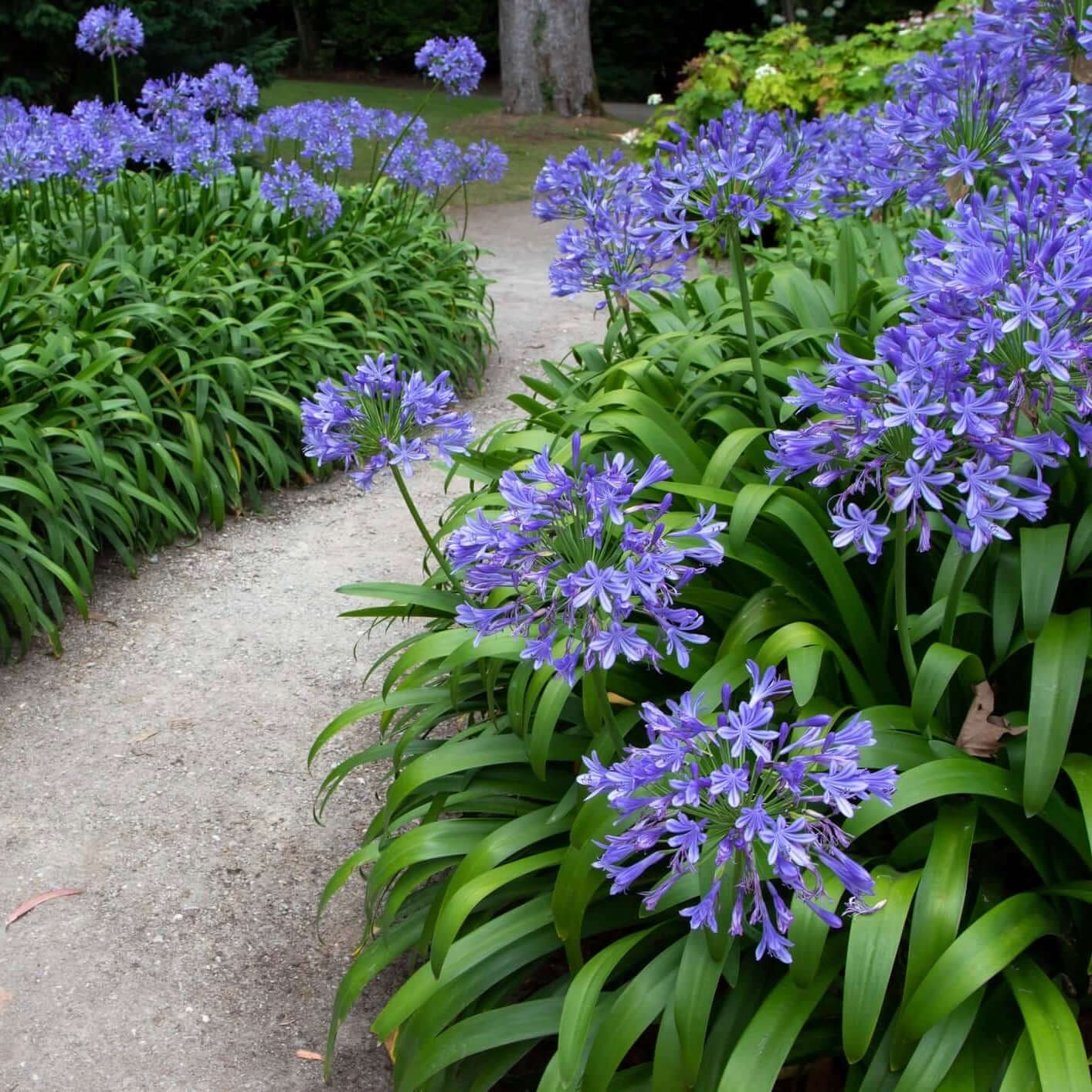Agapanthus Propagation: Tips for Expanding Your Plant Collection
Agapanthus Propagation: Tips for Expanding Your Plant Collection
Blog Article
Mastering the Art of Agapanthus Care: Essential Steps for Healthy And Balanced Growth and Dynamic Flowers
In the world of gardening, the growing of agapanthus stands as a satisfying undertaking for those who look for to nurture these sophisticated blooming plants. From picking the right range to understanding trimming techniques, the trip in the direction of cultivating flourishing agapanthus plants is complex and holds the key to opening the full potential of these organic treasures.

Picking the Right Agapanthus Range

When selecting the ideal Agapanthus range for your yard, take into consideration elements such as environment viability, blossom color, and development behavior. Agapanthus, commonly known as Lily of the Nile or African lily, comes in a variety of colors ranging from shades of blue and purple to white. Select a blossom color that matches your existing garden palette to create a harmonious landscape. Furthermore, consider the climate in your region to guarantee the Agapanthus selection you choose can flourish in your specific problems. Some varieties are extra tolerant of chilly temperature levels, while others choose warmer environments. Understanding the growth behavior of various Agapanthus varieties is essential for correct positioning within your garden. Some selections have a clumping development practice, suitable for borders or containers, while others have a more spreading nature, suitable for ground cover or mass plantings. By very carefully evaluating these variables, you can select the perfect Agapanthus selection to improve the elegance of your yard.
Perfect Planting Problems
Considering the optimal ecological requirements is necessary for effective Agapanthus cultivation. Agapanthus plants are delicate to cold temperature levels and should be shielded from frost during winter season months.
To ensure healthy and balanced development and vivid blossoms, plant Agapanthus light bulbs at a depth of about 2-4 inches and space them 8-12 inches apart. Mulching around the base of the plants assists retain dampness and subdues weed development.
Watering and Fertilizing Tips
Maintaining proper dampness degrees and offering crucial nutrients are crucial aspects in the care program for Agapanthus plants. When it comes to watering Agapanthus, it is crucial to strike an equilibrium. These plants favor constantly damp soil yet are vulnerable to root rot if overwatered.
Feeding Agapanthus is necessary for advertising healthy and balanced growth and respected blooms. Use a well balanced plant food, such as a 10-10-10 formula, in the very early spring as brand-new growth emerges. By complying with these watering and feeding tips, you can ensure your Agapanthus plants thrive and create lively, resilient blooms.
Trimming Strategies for Agapanthus
Pruning Agapanthus plants at the proper times and with correct techniques is critical important site for maintaining their health and wellness and advertising optimum growth and flowering. The suitable time to prune Agapanthus remains in late winter season or early springtime prior to brand-new development arises. Beginning by removing any yellowing or dead fallen leaves near the base of the plant. Cut them as close to the ground as feasible without damaging the emerging shoots.
For flowered stems, wait until the blooms have actually withered and then trim them back to the base. This not just cleans the plant's appearance yet also encourages the advancement of brand-new blossom buds. Deadheading invested flowers can likewise reroute the plant's energy into producing even more blossoms instead of establishing seeds. Nevertheless, if you want to accumulate seeds for proliferation, leave some flowers to fully grown and completely dry on the plant.
Keep More hints in mind to make use of tidy, sharp tools to make specific cuts and lower the threat of introducing diseases. Agapanthus. Normal pruning will certainly help keep your Agapanthus looking healthy and cool while guaranteeing a plentiful display of stunning blossoms
Managing Common Parasites and Illness
After making certain correct pruning strategies for Agapanthus, it is vital to deal with typical insects and conditions that can impact the health and vitality of these plants. One common bug that affects Agapanthus is the Agapanthus gall midge.
Furthermore, Agapanthus plants can experience from root rot if they are planted in inadequately draining dirt. By being cautious and taking timely action versus pests and illness, you can assist your Agapanthus plants grow and create dynamic flowers. Agapanthus.

Verdict
To conclude, understanding the art of agapanthus treatment includes choosing the best variety, giving optimal planting problems, proper watering and feeding, suitable pruning strategies, and resolving common parasites and illness. By adhering to these necessary steps, you can ensure healthy and balanced growth and vibrant blossoms for your agapanthus plants. Keep in mind to frequently monitor and preserve your plants to advertise their overall health and durability.
To ensure healthy and balanced growth and vibrant blooms, plant Agapanthus light bulbs at a deepness of about 2-4 inches and area them 8-12 inches apart. By adhering to these watering and feeding tips, you can guarantee your Agapanthus plants flourish and generate vivid, resilient blooms.
One typical insect that influences Agapanthus is the Agapanthus gall midge. Additionally, Agapanthus plants can experience from origin rot if they are planted in badly draining soil. By following have a peek at these guys these vital actions, you can make sure healthy and balanced growth and vibrant flowers for your agapanthus plants.
Report this page